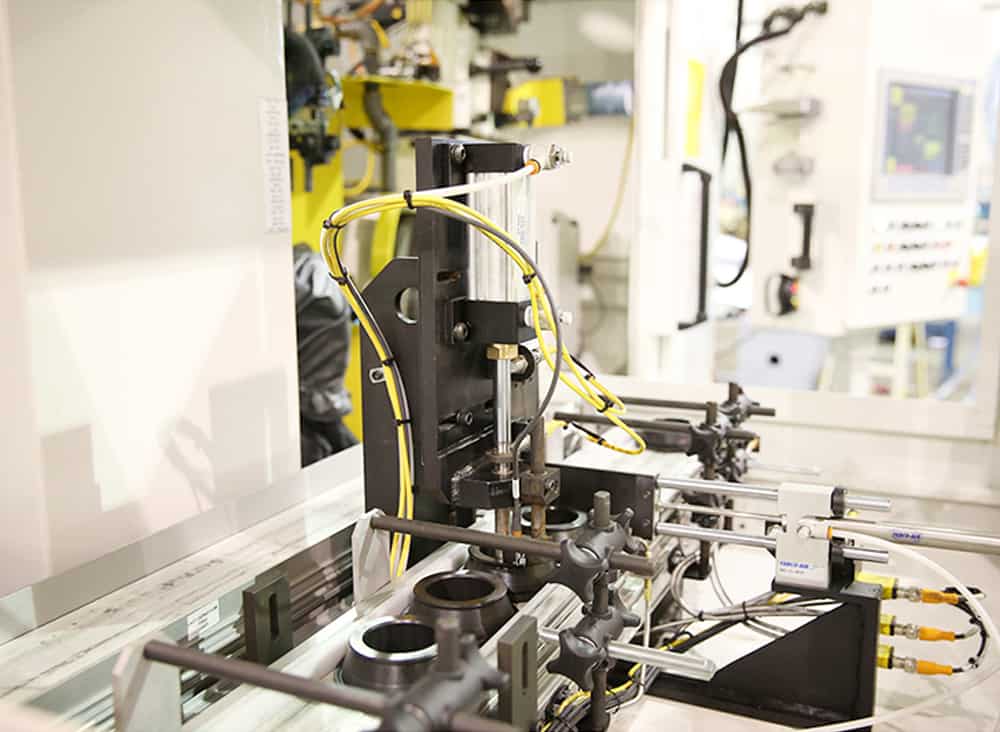

From automotive components requiring exact tolerances to aerospace parts demanding flawless surface finishes, grinding operations directly impact product quality and profitability. Yet many manufacturers still rely on manual grinding processes that struggle to meet modern demands.
Rising production volumes, skilled operator shortages, and increasingly tight quality specifications create mounting pressure on traditional grinding workflows. Labor costs continue climbing while customers expect better consistency and faster turnaround times.
The solution lies in understanding when and why to transition from manual operations to automated grinding machines—a strategic decision that can transform your manufacturing capabilities and competitive position.
The Limitations of Manual Grinding Processes
Below are some of the limitations of manual grinding operations:- Inconsistent Finish Quality: Human operators naturally introduce variability in pressure application, feed rates, and positioning. Even skilled technicians experience performance fluctuations throughout their shifts, leading to parts that meet specifications early in the day but fall short during afternoon production runs.
- Operator Fatigue and Variability: Manual grinding requires sustained concentration and physical endurance. As operators tire, their precision decreases, surface finishes suffer, and the risk of costly mistakes rises.
- Longer Cycle Times: Each part requires individual attention, preventing the continuous flow that modern manufacturing demands. These extended cycle times create production bottlenecks that ripple through entire manufacturing schedules.
- Increased Rework and Downtime Risks: When parts fall outside specifications, production stops for adjustments, rework, or scrap disposal. Such interruptions can be costly and unpredictable, complicating production planning.
- Unsuitable for Lights-Out or 24/7 Production: Manual grinding limits manufacturing capacity to operator availability. This constraint becomes particularly problematic when rush orders arrive or production schedules demand extended operating hours.
Why Automation Is the Smart Fix for Grinding Inconsistencies
There are many benefits of automated grinding systems, including:- Precision Grinding with Minimal Human Intervention: Automated systems maintain exact feed rates, pressure applications, and positioning throughout entire production runs. This consistency translates directly into improved part quality and reduced scrap rates.
- Faster, Repeatable Output with Tighter Tolerances: Automated grinding machines can hold tolerances that would challenge even the most skilled manual operators, while completing parts in consistent cycle times regardless of shift changes or operator fatigue.
- Reduced Reliance on Skilled Operators: Automated systems allow less experienced workers to produce high-quality results, while skilled operators can focus on setup, programming, and process optimization rather than repetitive manual tasks.
- Real-Time Process Monitoring and Diagnostics: Continuous monitoring of grinding conditions, wheel wear, and part quality enables proactive adjustments and prevents the production of out-of-specification parts that plague manual operations.
- Seamless Integration with Robotic Handling or Conveyors: Parts flow through the grinding process without manual intervention, enabling continuous production and freeing operators for higher-value activities.
Why Automation Drives Smarter Production
Modern automated grinding machines serve as data collection points that support broader manufacturing intelligence initiatives. These Industry 4.0-enabled systems transform grinding from an isolated process into an integrated component of smart manufacturing.Automated grinders can collect and analyze comprehensive data on cycle times, surface finish quality, tool wear patterns, and process efficiency. For instance, adaptive control systems use sensors and feedback loops to make real-time adjustments during the grinding process. When sensors detect variations in material hardness or part geometry, the system automatically adjusts grinding parameters to maintain consistent results.
This information flows into manufacturing execution systems, providing real-time visibility into the production status. It also helps with predictive maintenance scheduling and provides complete traceability for quality control requirements.
Remote monitoring functionality allows operators, supervisors, and plant managers to access grinder status, performance metrics, and alert notifications from anywhere in the facility or even off-site. Dashboard interfaces and mobile applications provide real-time visibility into machine performance, enabling rapid response to issues and supporting unattended or lights-out grinding operations.
Common Concerns About Automation—And the Reality
Many manufacturers hesitate to adopt automated grinding machines due to misconceptions about cost, complexity, and disruption. Here are some common grinder automation concerns:
- It’s too expensive: Rather than requiring massive capital investments, modular systems allow phased implementation that spreads costs over time. In fact, automation delivers cost savings through reduced labor requirements, decreased scrap rates, and improved productivity that often yields a positive ROI within 12 to 24 months.
- We don’t have the expertise: Modern automated grinder parts and systems are very user-friendly. Contemporary human-machine interfaces use intuitive touchscreen controls and built-in presets that require minimal training. Many systems include remote support capabilities, allowing vendors to provide assistance and training without on-site visits.
- It’ll disrupt our current flow: Rather than completely overhauling operations overnight, successful automation projects often begin with a single grinding task or workpiece type. This approach allows teams to gain experience and confidence while maintaining production continuity.
- It’s only for large-scale operations: Modern automation solutions scale with business growth, starting with basic functionality and adding capabilities as production demands increase. Even shops producing diverse part types benefit from automation’s consistency and quality improvements.
Take the Next Step Toward Smarter Grinding with GCH Machinery
The question isn’t whether to automate grinding operations, but when to begin the transition. Each day spent with manual processes represents missed opportunities for improved quality, reduced costs, and enhanced competitive positioning. At GCH Machinery, our team brings over 55 years of experience in grinder automation, retrofitting processes, and grinder maintenance.Let us help you develop a customized automation strategy that delivers measurable results for your specific applications and budget requirements. Contact us today to explore how automated grinding machines, grinder accessories, and grinder upgrade solutions can transform your grinding operations.
*Required fields
*Required fields
*Required fields
*Required fields
*Required fields
*Required fields
*Required fields
*Required fields
